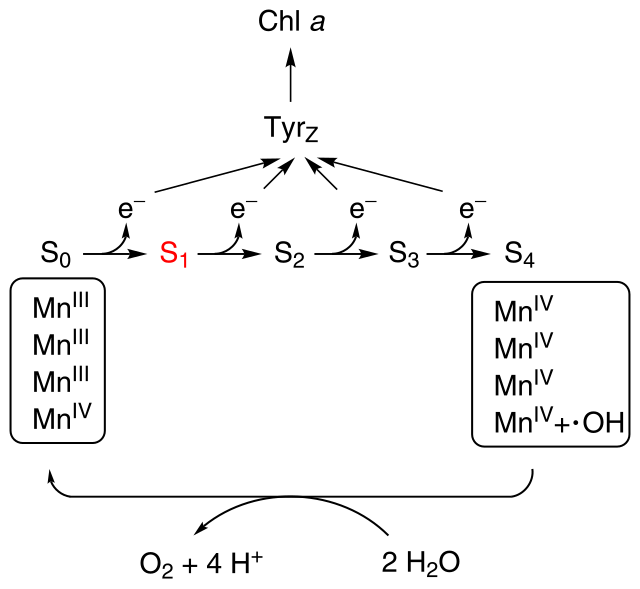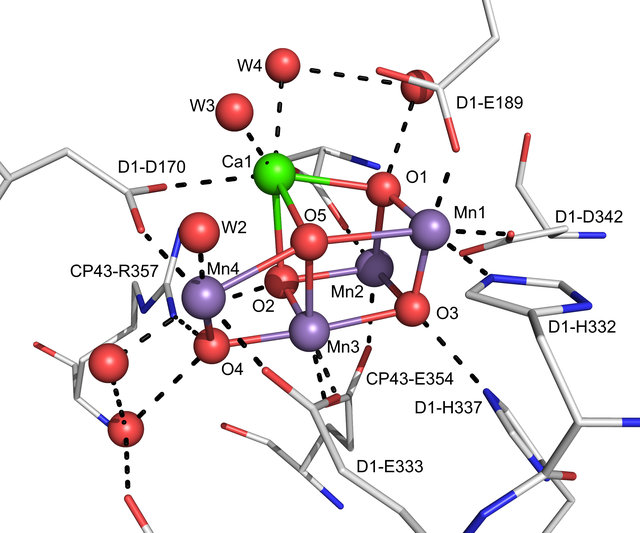Top Qs
Timeline
Chat
Perspective
Oxygen-evolving complex
Water-oxidizing enzyme in photosynthesis From Wikipedia, the free encyclopedia
Remove ads
The oxygen-evolving complex (OEC), also known as the water-splitting complex, is the active site of a water-oxidizing enzyme involved in the photo-oxidation of water during the light reactions of photosynthesis.[3] OEC is surrounded by 4 core proteins of photosystem II at the membrane-lumen interface. The mechanism for splitting water involves absorption of three photons before the fourth provides sufficient energy for water oxidation.[4] Based on a widely accepted theory from 1970 by Kok, the complex can exist in 5 states, denoted S0 to S4, with S0 the most reduced and S4 the most oxidized. Energy from the photons captured by photosystem II moves the system from state S0 to S1 to S2 to S3 and finally to S4. S4 reacts with water producing free oxygen:
- 2 H2O → O2 + 4 H+ + 4 e−


This conversion resets the catalyst to the S0 state.
The active site of the OEC consists of a cluster of manganese and calcium with the formula Mn4Ca1OxCl1–2(HCO3)y. This cluster is bound to D1 and CP43 subunits and stabilized by peripheral membrane proteins. Many characteristics of it have been examined by flash photolysis experiments, electron paramagnetic resonance (EPR), and X-ray spectroscopy.[5]
The mechanism of the complex is proposed to involve an Mn-oxide which couples by O-O bond formation to a calcium oxide/hydroxide.[6][7][8]
Remove ads
References
Wikiwand - on
Seamless Wikipedia browsing. On steroids.
Remove ads
